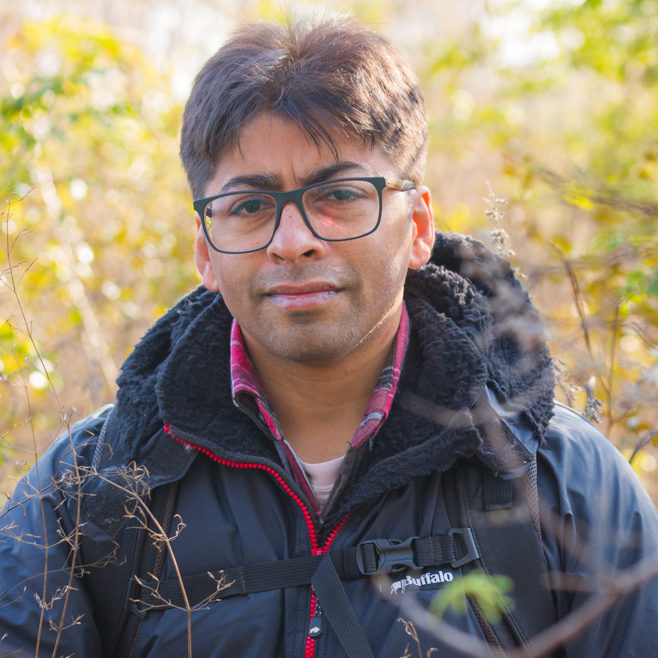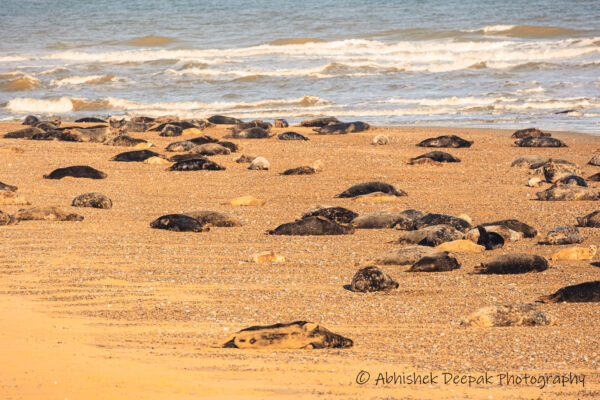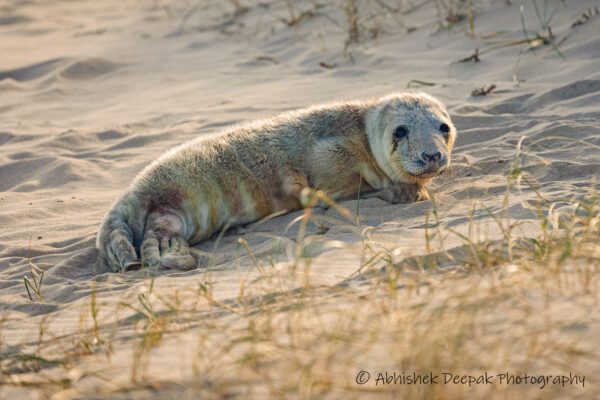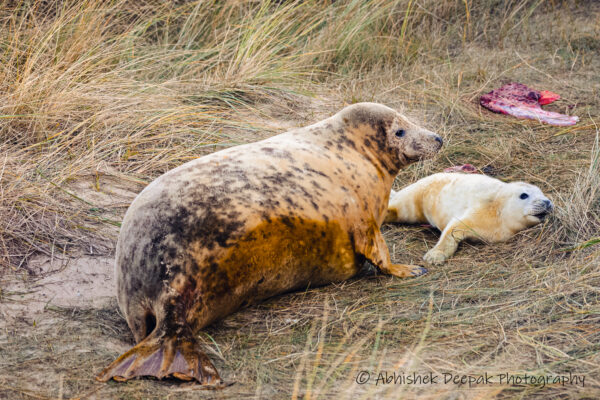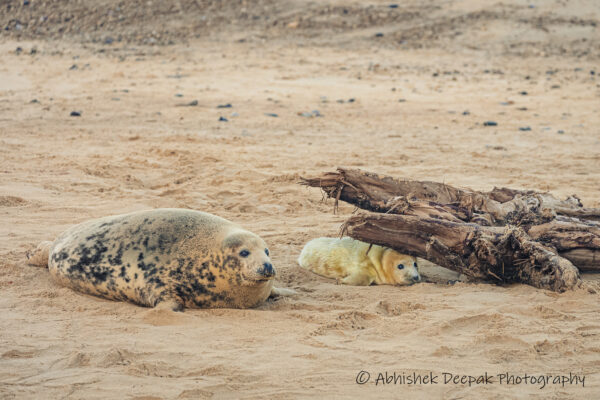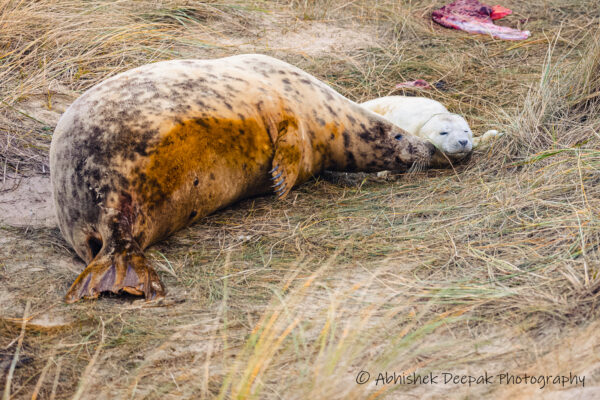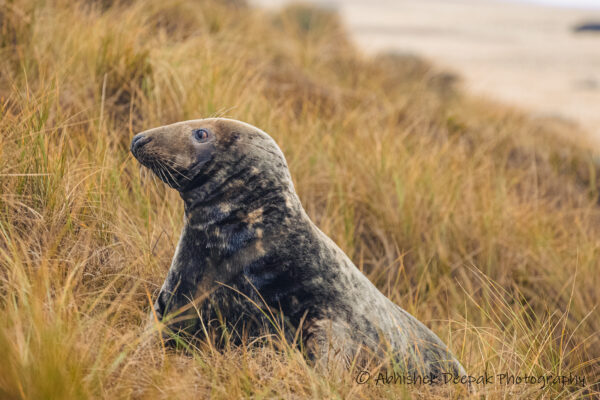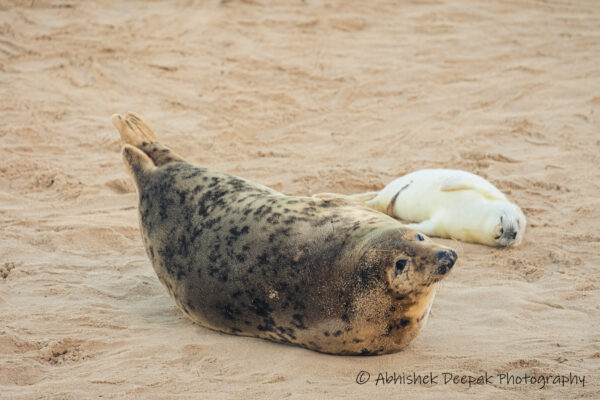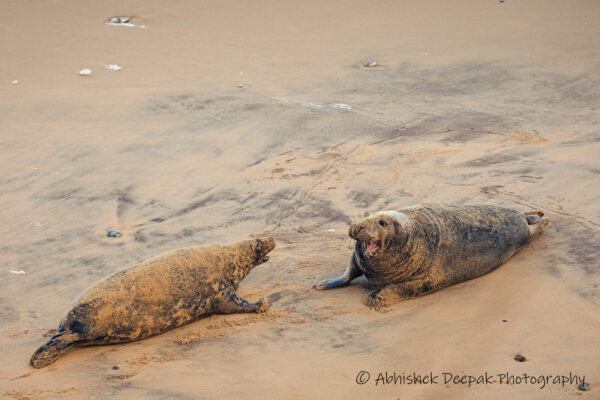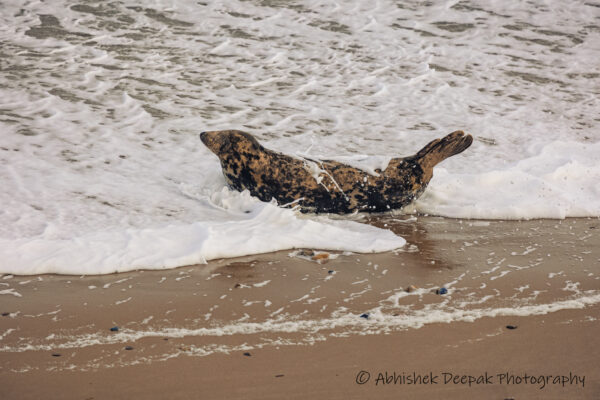Horsey Gap which is located in Norfolk county in North East of England, is home to the largest colonies of grey seals. From November to the end of January, the beach is crowded with seals and their new born pups. Grey seals can move at a speed of 35km/hr in water and 2km/hr on land.
Here I had spent 5 days filming and photographing seals in the month of November just when the breeding season starts. Pups are born in the winter and only 40% survive in the first year.
When a female seal is about to give birth then they form a rookery on the sand or rocks. Seal bulls usually enter the rookery only after the cows have given birth and here they try to gain access to groups of females.
Seal pups when born have soft white fur and this fur is not waterproof. Their fur first moults after 3 weeks and they are likely to drown if they go into the sea before this three weeks. New born seal pups also lack blubber which is a thin layer of fat. Once this blubber develops, it helps to keep the seal warm. The umbilical cord can still be visible on new born pups.
Pregnant cows arrive on the beach first and usually give birth to their pup a day after coming ashore. The cow will sniff the new pup during the first 30 minutes in order to form a bond between her pup and its smell.
Seal cows can live upto 35 years. 16% of cows are sexually mature by their third birthday and give birth to their first pup a year later following an eleven month gestation period. Bulls also get sexually mature at around the same time as cows but due to competition for females, they rarely mate until they are eight years old.
During the months prior to the breeding season, both bulls and cows actively feed and their diet includes a variety of fish and shellfish. According to some research and observation, grey seals also feed on larger animals such as harbour seals and harbour porpoises. Cows feed to help build up fat reserves and this extra fat helps to sustain the mother and her calf during the fasting period which follows the birth, usually lasting 3 weeks. Like cows, bulls also fast during the breeding season and this may last upto 6 weeks.
Cows are smaller than bulls reaching upto 2m in length and weighing upto 150kg. Cows attain full size by 15 years of age. Cows are also paler in comparison to bulls. They are silver grey with small scattered dark spots while bulls have a dark grey background colour with silver grey spots. In both bulls and cows, the belly is lighter than the back. The nose of a grey seal can differentiate a bull from a cow. Bulls have a long arched nose whereas cows have a short narrower nose. Bulls weigh upto 300kg and reach upto 3m long. They reach maximum size by 11 years of age.
Newborn seal pups usually weigh around 15kg and gain an extra 2kg per day in weight and this is due to the high fat content of mothers milk. Pups start to suckle within 6 hours of being born. They continue to suckle for three weeks and will suckle six times a day. Weaned pups can weigh around 45kg. Once the pup has weaned, the seal mother leaves the pup to fend for itself. The pup stays on the beach for 3 weeks until it has moulted losing the dense soft silky white fur it was born with. When pups finally enter the sea, they have to learn what they can eat and how to catch it.
Mothers can get very territorial around their pup. Seal bulls indulge in territorial fighting during the breeding season and a successful bull may mate with upto 10 cows.
They spend a lot of time basking in the sun and this helps to remove parasites from their skin. They are also at times seen waving their flippers. This might seem like a greeting but infact they are cooling down. Flippers have a large blood supply to allow heat to escape from their bodies.
The beach is closed to people during the pup season and this is because mothers can abandon their pups causing them to die from neglect. At Horsey beach, a temporary barrier is created to encourage visitors to keep a safe distance from the seals. A bite from a grey seal can be fatal and their saliva is full of bacteria and if someone gets bitten then they would be required to taken for treatment to the nearest hospital.
